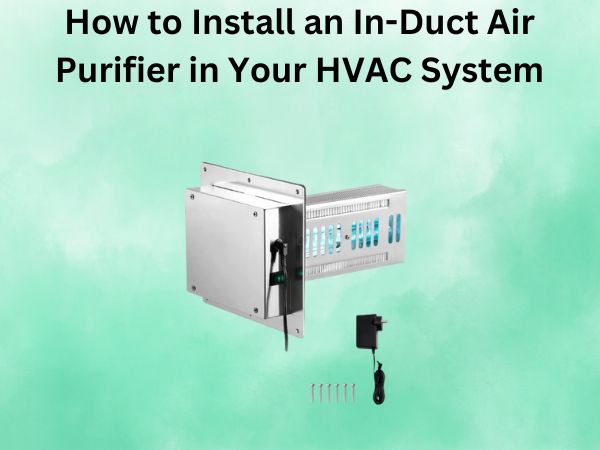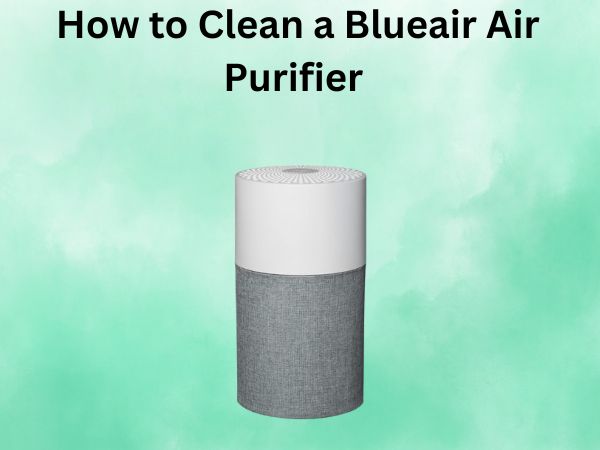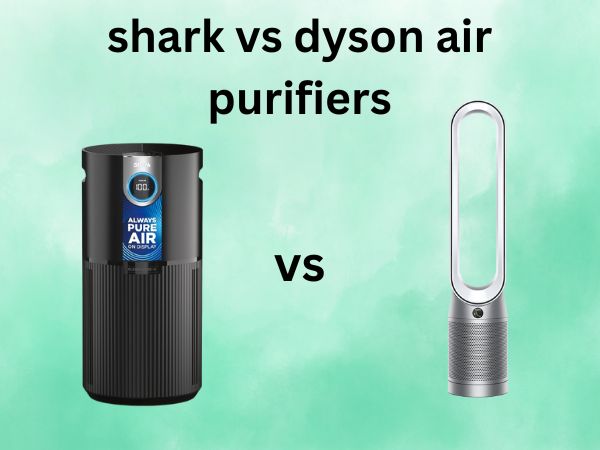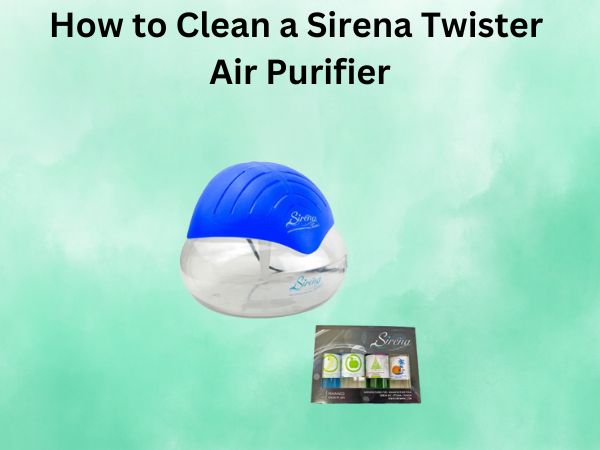How Air Purifiers Work at Home: A Complete Guide
In today’s world, we spend roughly 90% of our time indoors, yet the air inside our homes can be up to five times more polluted than outdoor air. Surprising, isn’t it? With increasing concerns about indoor air quality, air purifiers have become essential household appliances rather than luxury items. But how exactly do these devices clean the air we breathe? Let’s dive into the fascinating world of air purification technology and discover how these machines work to create a healthier home environment.
Table of Contents
Understanding Air Pollution in Your Home
Before we explore how air purifiers work, it’s important to understand what they’re working against. Your home isn’t the pristine sanctuary you might imagine—it’s actually a collection point for various airborne particles and pollutants.
Common Indoor Air Pollutants
Your home harbors numerous airborne contaminants that you might not even be aware of:
- Dust and dust mites: These microscopic particles settle on surfaces but also float in the air we breathe.
- Pet dander: Tiny skin flakes from pets that can trigger allergic reactions.
- Pollen: Even with windows closed, these allergens find ways inside.
- Mold spores: Particularly prevalent in humid environments.
- Smoke particles: From cooking, candles, or tobacco products.
- VOCs (Volatile Organic Compounds): Released from cleaning products, paint, new furniture, and carpets.
- Bacteria and viruses: Biological contaminants that can spread illness.
Ever notice that beam of sunlight streaming through your window? Those floating particles you see represent just a fraction of what’s actually in your air.
Health Impacts of Poor Indoor Air Quality
The pollutants lurking in your home aren’t just unpleasant—they can genuinely affect your health. Poor indoor air quality has been linked to:
- Worsened allergy symptoms and asthma attacks
- Increased respiratory infections
- Headaches and fatigue
- Sleep disturbances
- Long-term respiratory issues
For those with existing respiratory conditions, the elderly, and young children, these risks are even more significant. This is where air purifiers come into play—they help remove these harmful particles from your indoor environment.
The Science Behind Air Purifiers
Basic Operating Principles
At their core, air purifiers operate on a surprisingly simple concept: they pull air in, trap or destroy contaminants, and release cleaner air back into the room. Think of them as vacuum cleaners for your air, continuously cycling and filtering the air in your space.
Most air purifiers use fans to draw air through a series of filters designed to capture particles of different sizes. The cleaned air is then released back into the room, gradually reducing the concentration of airborne pollutants.
This cycle continues as long as the purifier is running, which is why continuous operation is often recommended for maximum effectiveness. Every minute it’s running, more pollutants are being removed from your breathing space.
Different Filtration Technologies
Not all air purifiers work the same way. Depending on the technology used, they might be better at removing certain types of pollutants than others.
HEPA Filtration
High-Efficiency Particulate Air (HEPA) filters are the gold standard in air purification. But what makes them so special?
HEPA filters are mechanical filters containing a dense mat of randomly arranged fibers, typically made from fiberglass. These filters must meet strict efficiency standards—capturing at least 99.97% of particles as small as 0.3 microns in diameter. To put that in perspective, a human hair is about 50-70 microns thick!
HEPA filters capture particles through several mechanisms:
- Interception: Particles stick to filter fibers when they come into contact
- Impaction: Larger particles crash into fibers and get stuck
- Diffusion: Smaller particles bounce around erratically until they hit a fiber
The result? Remarkable efficiency at removing dust, pollen, pet dander, dust mites, and even some bacteria from your air.
Activated Carbon Filters
While HEPA filters excel at capturing particles, they fall short when it comes to gases and odors. That’s where activated carbon filters come in.
Activated carbon is a form of carbon that’s been treated to have millions of microscopic pores, creating an enormous surface area. This surface area acts like a sponge, absorbing gases, chemicals, and odors through a process called adsorption.
When air passes through an activated carbon filter, compounds like VOCs, cooking odors, pet smells, and cigarette smoke are chemically attracted to the carbon surface and get trapped there. This makes activated carbon filters particularly valuable in kitchens or homes with pets or smokers.
UV Light Purification
Some air purifiers incorporate ultraviolet (UV) light technology to target biological pollutants. Here’s how it works:
UV-C light damages the DNA and RNA of microorganisms like bacteria, viruses, and mold spores, preventing them from reproducing and effectively neutralizing them. The air is directed past UV lamps within the purifier, exposing any microorganisms to this germicidal light.
It’s worth noting that UV purification works best when air flow is slowed down to ensure adequate exposure time, and it’s most effective when combined with other filtration methods like HEPA filters.
Ionizers and Electrostatic Precipitators
These technologies use electrical charges to remove particles from the air.
Ionizers release negatively charged ions into the air, which attach to positively charged airborne particles. This makes the particles heavier, causing them to fall to the floor or stick to nearby surfaces.
Electrostatic precipitators take this a step further by containing charged plates or surfaces that attract and collect these charged particles, keeping them out of the air and contained within the unit.
While effective at removing particles, some ionizers can produce ozone as a byproduct, which is a respiratory irritant. Modern air purifiers with this technology typically include features to minimize ozone production.
Choosing the Right Air Purifier for Your Home
With so many options available, selecting the right air purifier can feel overwhelming. Understanding a few key considerations can make this decision much easier.
Understanding CADR Ratings
CADR (Clean Air Delivery Rate) is one of the most helpful metrics when shopping for an air purifier. But what exactly does it measure?
CADR indicates how quickly an air purifier can clean the air in a specific room size. It’s typically expressed in cubic feet per minute (CFM) and is usually given for three types of pollutants: dust, pollen, and smoke.
The higher the CADR number, the more air the unit filters and the larger the room it can effectively clean. For example, an air purifier with a CADR of 200 for dust can remove dust from a room more quickly than one with a CADR of 100.
As a rule of thumb, look for a CADR that’s at least two-thirds of your room’s square footage. For a 15′ x 15′ room (225 square feet), a CADR of at least 150 would be appropriate.
Room Size Considerations
One of the most common mistakes people make is using an air purifier that’s too small for their space. Imagine trying to cool a three-bedroom house with a tiny desk fan—it simply won’t be effective.
Manufacturers typically list the maximum room size their air purifiers can handle effectively. Choose one that’s rated for a space at least as large as the room where you’ll use it. When in doubt, going one size up is better than too small.
Also consider ceiling height—rooms with ceilings higher than the standard 8 feet will need more powerful air purifiers than the square footage alone might suggest.
Special Features to Look For
Modern air purifiers come with various features that can enhance their functionality:
- Air quality sensors: These detect pollutant levels and automatically adjust fan speeds accordingly
- Filter change indicators: Remind you when it’s time to replace filters
- Programmable timers: Allow scheduled operation
- Multiple fan speeds: Provide flexibility between quieter operation and more powerful air cleaning
- Sleep or night mode: Operates more quietly with dimmed lights for bedroom use
- Smart capabilities: Connect to apps or home automation systems for remote control and monitoring
Consider which features match your lifestyle and needs. If you’re tech-savvy, smart features might appeal to you. If you’re forgetful about maintenance, filter change indicators could be essential.
Optimal Placement of Air Purifiers
Even the best air purifier won’t work effectively if poorly positioned. Placement can significantly impact performance.
Room-by-Room Placement Guide
Living Room: Place the purifier where people spend the most time, but avoid corners where air circulation is limited. Positioning it near potential pollution sources (like by the entryway where outdoor contaminants enter) can be effective.
Bedroom: Position the unit about 6-10 feet from your bed, preferably at bed height. This ensures the clean air reaches your breathing zone during sleep. If space is limited, placing it on a nightstand can work well.
Kitchen: Kitchen air purifiers should be placed away from direct heat and moisture sources but close enough to capture cooking fumes and odors—typically on a counter about 5-6 feet from the stove.
Home Office: Position near your workspace but not directly behind computer equipment where vents might be blocked.
General placement tips include:
- Keep at least 2 feet of clearance around the unit for proper air intake
- Elevate off the floor for better circulation (except for purifiers specifically designed for floor placement)
- Position away from walls and furniture that could obstruct airflow
- Avoid placing near electronics that generate electromagnetic interference
- Keep away from areas with high humidity like bathrooms
Maintenance and Long-Term Care
Like any appliance, air purifiers require regular maintenance to function optimally. Neglecting maintenance not only reduces efficiency but can actually worsen air quality if filters become saturated.
Filter Replacement Schedule
Different types of filters have varying lifespans:
- HEPA filters: Typically need replacement every 6-12 months, depending on air quality and usage
- Activated carbon filters: Usually last 3-6 months before their absorption capacity is exhausted
- Pre-filters: May need cleaning or replacement every 30 days if washable, or every 3 months if disposable
Many factors can affect these timeframes, including:
- Pet ownership (can shorten filter life by up to 50%)
- Smoking in the home
- Construction or renovation nearby
- Seasonal allergy periods with high pollen counts
Always follow manufacturer guidelines, but be prepared to replace filters more frequently in high-pollution environments.
Cleaning Your Air Purifier
Beyond filter replacement, regular cleaning helps maintain performance:
- Unplug the unit before any maintenance
- Vacuum the exterior vents and grilles monthly
- Wipe down the exterior with a damp cloth
- For washable pre-filters, rinse and dry completely before reinstalling
- Check and clean fan blades if accessible (consult your manual)
- Ensure the area around the purifier stays clean to prevent additional dust intake
Mark your calendar or set phone reminders for maintenance tasks—air purifiers work silently in the background, making it easy to forget they need attention.
Measuring Air Purifier Effectiveness
How do you know if your air purifier is actually working? There are several ways to gauge effectiveness.
Air Quality Monitors
The most objective way to measure air purifier performance is with an air quality monitor. These devices detect various pollutants and provide readings of particulate matter, VOCs, humidity, and sometimes CO2 levels.
Some advanced air purifiers have built-in monitoring systems that display real-time air quality measurements. Standalone monitors are also available and can help you:
- Compare air quality before and after purifier installation
- Determine the most polluted areas of your home
- Adjust purifier settings based on current conditions
- Verify that your purifier is appropriately sized for your space
Beyond electronic measurements, you might notice subjective improvements like:
- Reduced asthma or allergy symptoms
- Less visible dust accumulation on surfaces
- Decreased cooking or pet odors
- Improved sleep quality
- Reduction in sneezing or coughing
While these observations aren’t scientific measurements, they’re meaningful indicators of improved air quality.
Common Misconceptions About Air Purifiers
Despite their growing popularity, air purifiers are still subject to several misconceptions:
Myth 1: Air purifiers eliminate all indoor pollutants Reality: While high-quality air purifiers significantly reduce airborne particles, they can’t remove all pollutants, especially those on surfaces or in materials. They’re one part of a comprehensive indoor air quality strategy.
Myth 2: Once you have an air purifier, you don’t need to clean as often Reality: Air purifiers complement regular cleaning rather than replace it. Dust and allergens that settle on surfaces still need to be removed through vacuuming and dusting.
Myth 3: All air purifiers are basically the same Reality: As we’ve explored, air purifiers use different technologies that target different pollutants. The differences between models and technologies are substantial.
Myth 4: Air purifiers use too much electricity Reality: Most modern air purifiers are energy-efficient, typically using 50-200 watts (similar to a computer or light bulb). ENERGY STAR certified models are particularly efficient.
Myth 5: Air purifiers make too much noise Reality: While some models can be noisy at high settings, many modern air purifiers offer whisper-quiet operation, especially in sleep modes.
FAQs About Air Purifiers
1. How long should I run my air purifier each day?
For optimal air quality, it’s best to run your air purifier continuously. However, if that’s not feasible, aim for at least 12 hours per day, focusing on times when you’re at home. Many units have programmable timers or smart features that allow you to create a schedule that works with your lifestyle while conserving energy.
2. Can air purifiers help with COVID-19 and other viruses?
While no air purifier can provide complete protection against viruses, high-quality units with true HEPA filters can help reduce airborne viral particles, potentially lowering transmission risk when used alongside other preventive measures. Units with additional UV-C light technology may provide extra effectiveness against biological contaminants. However, air purifiers should complement—not replace—other preventive measures like vaccination, proper ventilation, and following public health guidelines.
3. Why does my air purifier produce a smell when I first start using it?
A new air purifier might emit a slight “new appliance” odor from plastic components or manufacturing residues. This typically dissipates within a few days. If you notice a persistent plastic, burning, or ozone smell, however, check your unit’s ionizer settings (if applicable) or contact the manufacturer, as this could indicate an issue with the unit.
4. How are air purifiers different from dehumidifiers or humidifiers?
These appliances serve different purposes: air purifiers remove particles and pollutants from the air but don’t affect moisture levels. Dehumidifiers remove excess moisture from the air, which can help prevent mold and mildew growth. Humidifiers add moisture to dry air, which can help with dry skin and respiratory comfort. In some situations, you might benefit from using a combination of these devices to address multiple indoor air issues.
5. Are air purifiers worth the investment if I don’t have allergies?
Even without diagnosed allergies, everyone can benefit from cleaner air. Air purifiers remove a wide range of pollutants—including dust, cooking odors, pet dander, VOCs from cleaning products, and outdoor pollution that enters through windows and doors. Many users without allergies report better sleep, fewer respiratory irritations, and a fresher-smelling home after using air purifiers. Consider them preventative health tools rather than just allergy management devices.
Conclusion
Air purifiers work through various technologies—from mechanical HEPA filtration to chemical absorption with activated carbon and sanitization with UV light—to remove harmful particles and gases from your indoor air. Their effectiveness depends on choosing the right size and type for your specific needs, proper placement, and consistent maintenance.
For many households, especially those with allergy sufferers, pets, or in areas with high pollution, an air purifier isn’t just a luxury—it’s an investment in health and comfort. By understanding how these devices work, you can make informed decisions about incorporating air purification into your home environment.
Remember that air purifiers work best as part of a holistic approach to indoor air quality that includes proper ventilation, regular cleaning, humidity control, and reducing pollution sources. With the right combination of strategies and technologies, you can breathe easier knowing you’re creating a healthier home environment for yourself and your loved ones.






